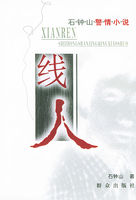When we consider, further, that almost all other animals have in earlier ages been represented by allied yet distinct forms--that, in the latter part of the tertiary period, Europe was inhabited by bears, deer, wolves, and cats; Australia by kangaroos and other marsupials; South America by gigantic sloths and ant-eaters; all different from any now existing, though intimately allied to them--we have every reason to believe that the Orangutan, the Chimpanzee, and the Gorilla have also had their forerunners. With what interest must every naturalist look forward to the time when the caves and tertiary deposits of the tropics may be thoroughly examined, and the past history and earliest appearance of the great man-like apes be made known at length.
I will now say a few words as to the supposed existence of a Bornean Orang as large as the Gorilla. I have myself examined the bodies of seventeen freshly-killed Orangs, all of which were carefully measured; and of seven of them, I preserved the skeleton. I also obtained two skeletons killed by other persons.
Of this extensive series, sixteen were fully adult, nine being males, and seven females. The adult males of the large Orangs only varied from 4 feet 1 inch to 4 feet 2 inches in height, measured fairly to the heel, so as to give the height of the animal if it stood perfectly erect; the extent of the outstretched arms, from 7 feet 2 inches to 7 feet 8 inches; and the width of the face, from 10 inches to 13 1/2 inches. The dimensions given by other naturalists closely agree with mine.
The largest Orang measured by Temminck was 4 feet high. Of twenty-five specimens collected by Schlegel and Muller, the largest old male was 4 feet 1 inch; and the largest skeleton in the Calcutta Museum was, according to Mr. Blyth, 4 feet 1 1/2inch. My specimens were all from the northwest coast of Borneo;those of the Dutch from the west and south coasts; and no specimen has yet reached Europe exceeding these dimensions, although the total number of skins and skeletons must amount to over a hundred.
Strange to say, however, several persons declare that they have measured Orangs of a much larger size. Temminck, in his Monograph of the Orang, says that he has just received news of the capture of a specimen 5 feet 3 inches high. Unfortunately, it never seems to have a reached Holland, for nothing has since been heard of any such animal. Mr. St. John, in his "Life in the Forests of the Far East," vol. ii. p. 237, tells us of an Orang shot by a friend of his, which was 5 feet 2 inches from the heel to the top of the head, the arm 17 inches in girth, and the wrist 12 inches! The head alone was brought to Sarawak, and Mr. St. John tells us that he assisted to measure this, and that it was 15 inches broad by 14 long. Unfortunately, even this skull appears not to have been preserved, for no specimen corresponding to these dimensions has yet reached England.
In a letter from Sir James Brooke, dated October 1857 in which he acknowledges the receipt of my Papers on the Orang, published in the "Annals and Magazine of Natural History," he sends me the measurements of a specimen killed by his nephew, which I will give exactly as I received it: "September 3rd, 1867, killed female Orangutan. Height, from head to heel, 4 feet 6 inches.
Stretch from fingers to fingers across body, 6 feet 1 inch.
Breadth of face, including callosities, 11 inches." Now, in these dimensions, there is palpably one error; for in every Orang yet measured by any naturalist, an expanse of arms of 6 feet 1 inch corresponds to a height of about 3 feet 6 inches, while the largest specimens of 4 feet to 4 feet 2 inches high, always have the extended arms as much as 7 feet 3 inches to 7 feet 8 inches.
It is, in fact, one of the characters of the genus to have the arms so long that an animal standing nearly erect can rest its fingers on the ground. A height of 4 feet 6 inches would therefore require a stretch of arms of at least 8 feet! If it were only 6 feet to that height, as given in the dimensions quoted, the animal would not be an Orang at all, but a new genus of apes, differing materially in habits and mode of progression.
But Mr. Johnson, who shot this animal, and who knows Orangs well, evidently considered it to be one; and we have therefore to judge whether it is more probable that he made a mistake of two feet in the stretch of the arms, or of one foot in the height. The latter error is certainly the easiest to make, and it will bring his animal into agreement, as to proportions and size, with all those which exist in Europe. How easy it is to be deceived as to the height of these animals is well shown in the case of the Sumatran Orang, the skin of which was described by Dr. Clarke Abel. The captain and crew who killed this animal declared that when alive he exceeded the tallest man, and looked so gigantic that they thought he was 7 feet high; but that, when he was killed and lay upon the ground, they found he was only about 6 feet. Now it will hardly be credited that the skin of this identical animal exists in the Calcutta Museum, and Mr. Blyth, the late curator, states "that it is by no means one of the largest size"; which means that it is about 4 feet high!
Having these undoubted examples of error in the dimensions of Orangs, it is not too much to conclude that Mr. St. John's friend made a similar error of measurement, or rather, perhaps, of memory; for we are not told that the dimensions were noted down at the time they were made. The only figures given by Mr. St.
John on his own authority are that "the head was 15 inches broad by 14 inches long." As my largest male was 13 1/2 broad across the face, measured as soon as the animal was killed, I can quite understand that when the head arrived at Sarawak from the Batang Lupar, after two or three days' voyage, it was so swollen by decomposition as to measure an inch more than when it was fresh.
On the whole, therefore, I think it will be allowed, that up to this time we have not the least reliable evidence of the existence of Orangs in Borneo more than 4 feet 2 inches high.















